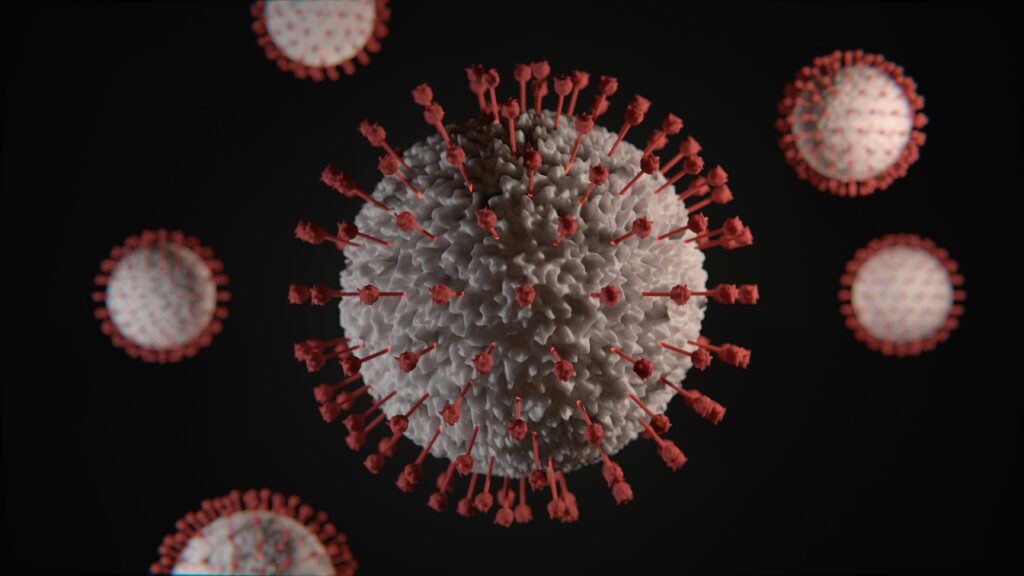Overview: This deep-dive is for prospective and current international students (and advisers) who want a clear, practical guide to how recent Canadian policy changes — including new exemptions, caps and documentation requirements — affect the real-life experience of studying in Canada. You’ll find the policy essentials, step-by-step actions, scenario-based guidance, survival tips for arrival and life in Canada, and a ready checklist so you can act with confidence.
1. Why this matters now: the changing landscape for international students
Canada has been one of the world’s most popular destinations for international students — prized for high-quality education, work opportunities while studying, and pathways to post-study work. In the past two years the federal government has introduced several changes meant to better manage the scale and integrity of temporary resident programs. These include caps on new study permits, new documentation requirements like provincial/territorial attestation letters (PAL/TAL) for certain applicants, changes to how and when students can change schools on an existing permit, and tightened financial and medical-exam rules. These adjustments affect application strategy, timing, and even daily life planning for students already admitted or intending to apply. (Reuters, Fragomen)
2. What’s new — quick summary of the headline changes
Below are the key policy changes you need to know (with official sources where possible):
- Study permit caps for 2025 and allocation rules. The government set an annual cap on new study permits and announced provincial/territorial allocations to limit intake and better align placements with service capacity. This affects the number of new approvals for 2025 and how certain cohorts are prioritized. (Canada.ca, Fragomen)
- Provincial/Territorial Attestation Letter (PAL/TAL) requirement. For many applicants (especially certain cohorts and programs), you must include a PAL or TAL with your application — issued by the province or territory where your designated learning institution (DLI) is located. There are exemptions (e.g., some exchange students) and precise validity windows for PAL/TALs. (Canada.ca, Northeastern International Hub)
- No changing schools on same study permit (Nov 8, 2024 rule). If you want to change to a different DLI after beginning studies, you usually must apply to extend/replace your study permit rather than switching institutions on the same permit. This affects planning and mobility between colleges/universities. (Canada.ca)
- Short-term study exemption remains. If your course or program is six months or less, a study permit is not required — but you must still meet other entry requirements. (Canada.ca)
- Entry documents (visitor visa / eTA) still required separately from study permit. A study permit is not itself a travel visa; most students must also have the appropriate visitor visa or an eTA to enter Canada by air. (Canada.ca)
- Medical exam and financial requirement updates. Canada extended some temporary medical policies and announced updated financial thresholds and documentation requirements to take effect (or be phased in) — applicants should confirm current rules when applying. (Canada.ca, The Times of India)
These changes were introduced over late 2024–2025 and are subject to updates; always verify the date on official IRCC pages when you prepare an application. (Canada.ca)
3. Who is affected — cohorts and exceptions
Not every international student is impacted in the same way. Here’s a practical breakdown:
- New full-time degree (undergraduate, master’s, PhD) applicants: Likely affected by study permit caps and PAL/TAL requirements depending on program and province. Graduate students, previously sometimes exempt from caps, have seen changing rules and may now count toward allocations in certain years. (Fragomen, CIC News)
- Short-term students and exchange students: Programs of six months or less remain exempt from needing a study permit; exchange students may also be exempt from PAL/TAL in many cases to preserve reciprocal mobility. (Canada.ca, Fragomen)
- Students changing schools in-Canada: The rule introduced in late 2024 means you cannot simply switch institutions on the same permit in many cases — you’ll likely need to apply to extend or replace your permit. This impacts mobility and course transfers. (Canada.ca)
- Visa-exempt travellers and eTA holders: eTA remains required for visa-exempt travellers arriving by air; U.S. citizens and permanent residents have specific exceptions. This affects how students from visa-exempt countries enter the country even if they have a study permit. (Canada.ca)
4. Step-by-step: How to apply or adapt under the new rules
Whether you’re preparing a first application, changing schools, or renewing, follow this adapted workflow to reduce risk of delays:
Step 1 — Confirm your eligibility and whether you need a study permit
- If your program is <= 6 months you typically do not need a study permit. Otherwise, you do. Always check the DLI and program status on IRCC’s site. (Canada.ca)
Step 2 — Check whether your application needs a PAL/TAL
- Ask your DLI and province/territory contact if your program cohort needs a PAL/TAL. PAL/TALs often have strict validity windows, and some categories (e.g., certain exchange programs) are exempt. If required, request the PAL/TAL early. (Canada.ca, Northeastern International Hub)
Step 3 — Review caps and timing
- Because of caps, apply earlier rather than later in the admissions cycle. A cap can mean applications processed later in the year are delayed or refused if allocations fill up. Track IRCC announcements and your DLI’s communications. (Canada.ca, CIC News)
Step 4 — Prepare stronger financial proof and medical documentation
- Gather up-to-date proof of funds in line with the latest financial thresholds (bank statements, guaranteed scholarships, education loans) and confirm if you need an immigration medical exam (IME) or can rely on a recent IME number. Some temporary IME policies have been extended — check the IRCC page for the latest. (The Times of India, Canada.ca)
Step 5 — Apply for a study permit (and separate entry visa/eTA)
- Apply online through the IRCC portal with your acceptance letter, PAL/TAL (if required), proof of funds, biometrics (if required), and other documents. Remember: study permit ≠ travel visa — most students still need a visitor visa or eTA to board a plane to Canada. (Canada.ca)
Step 6 — If you’re already in Canada and want to change schools
- Expect to apply to extend or replace your study permit rather than switching on the same permit. Talk to your DLI’s international student office and consider immigration counsel if your situation is complex. (Canada.ca)
Step 7 — Keep copies and maintain status
- Keep digital and paper copies of all correspondence, PAL/TAL, application receipts, and your study permit. Keep IRCC contact info and your DLI’s advising office on speed-dial.
5. Practical examples & scenarios
Here are two common student scenarios, explained with actionable next steps.
Scenario A — “Priya” — incoming master’s student from India
Priya accepted a master’s offer for Fall 2025. Her program requires a PAL and her cohort counts toward the provincial allocation. She must:
- Request a PAL from the provincial office (through her DLI contact) and confirm its validity period. (Canada.ca)
- Gather updated proof of funds matching the new thresholds (bank statements, sponsor letters). (The Times of India)
- Submit her study permit application early and include the PAL to avoid missing provincial allocation. (Canada.ca)
Scenario B — “Marco” — short-term language course (4 months) from Italy
Marco has a 4-month language program in Toronto. He doesn’t need a study permit, but he must:
- Confirm program length ≤ 6 months and retain proof of course length and acceptance. (Canada.ca)
- Apply for an eTA (if required as an Italian passport holder arriving by air) and ensure his passport validity covers his stay. (Canada.ca)
6. Real-life effects on planning, work, and post-study options
Working while studying
- Rules for working on and off campus remain tied to your study permit conditions. If you plan to work, ensure your study permit explicitly allows it and stays valid. With tighter intake, some students choose programs with co-op or integrated work components — but these should be validated by the DLI and clarified in your permit conditions. (Canada.ca)
Post-graduation work permit (PGWP) implications
- PGWP eligibility generally depends on DLI status and program length. Policy shifts (caps, attestation processes) don’t automatically change PGWP rules, but intake reductions could influence job market competition and provincial nomination pathways. Check the IRCC PGWP page for any linked updates. (Canada.ca)
Timing and mental load
- Expect longer planning windows. Because of caps and PAL/TAL steps, late applicants face a higher risk of delays. International student services recommend applying as soon as you receive your acceptance and PAL/TAL. (Canada.ca)
7. Checklist: Documents and tasks (printable)
Before you apply
- Acceptance letter from a DLI (official).
- Check if program > 6 months (study permit required) or ≤ 6 months (permit not required). (Canada.ca)
- Confirm whether PAL/TAL is required and request it from province/territory/DLI if so. (Canada.ca)
- Up-to-date proof of funds (bank statements, loan letters, sponsor affidavits) aligned with IRCC thresholds. (The Times of India)
- Immigration medical exam (IME) — verify if required and if previous IME may still be valid. (Canada.ca)
- Valid passport and recent passport photos.
- Biometrics appointment (if applicable). (Canada.ca)
At application
- Scan and upload all documents; keep originals.
- Apply for study permit online and, separately, for TRV/eTA if needed. (Canada.ca)
After approval
- Save your study permit, PAL/TAL, and any confirmation letters.
- Check entry requirements on arrival (COVID-era measures largely lifted, but check for any health/immigration updates).
- Register with DLI international student office and get orientation dates.
8. Arrival & settling in Canada — practical survival tips
Housing
- Start searching early; housing markets in Toronto and Vancouver are tight and prices vary widely. Consider university residences for first-term stability then transition to shared housing. Local Facebook groups and DLI housing services are useful.
Banking & phone
- Open a Canadian bank account within days of arrival. Many banks offer student-friendly packages. A local SIM with data will be indispensable.
Health insurance
- Verify provincial health coverage for international students (some provinces offer coverage immediately, others require enrollment in private plans). The DLI’s international office can explain province-specific rules.
Campus resources
- Use campus international student centres, academic advising, mental health services, and career centres — they are tuned to changes in immigration policy and often help with PAL/TAL questions and maintaining legal status.
Transportation
- Familiarize yourself with local transit passes and student discounts. Many cities offer monthly student rates.
9. Common questions (FAQs)
Q: Do I need a new study permit if my PAL/TAL expires while I’m waiting for a decision?
A: You must ensure the PAL/TAL you submit is valid at time of application. If it will expire, obtain a fresh attestation before applying or contact the issuing province/territory for guidance. (Canada.ca)
Q: If I change programs within the same DLI, do I need a new permit?
A: Minor program modifications sometimes don’t require a new permit, but major changes (especially changing DLIs) often do. Given the November 8, 2024 changes on changing schools on the same permit, consult your DLI and IRCC guidance. (Canada.ca)
Q: Are exchange students affected by the PAL/TAL or cap?
A: Many exchange programs are exempt from PAL/TAL to preserve reciprocal mobility — but verify with your sending institution and the host DLI. Caps and allocations still matter for overall intake planning. (Fragomen, Northeastern International Hub)
Q: What if my study permit is refused because allocations are full?
A: If refusal occurs due to cap/allocations, you may be able to reapply with updated timing or consider deferral of your DLI admission. Seek advice from the DLI and consider legal/immigration counsel where necessary. (CIC News)
10. Policy watch: what to monitor and where to verify
Since immigration policy can change rapidly, monitor these sources:
- IRCC / Canada.ca official pages — study permits, PAL/TAL guidance, entry requirements, and IME pages. These are the authoritative sources for rules and documentation. (Canada.ca)
- Provincial education or immigration offices — for province-specific PAL/TAL or attestation processes. (Canada.ca)
- DLI international student advisories — universities and colleges publish timely, localized instructions to admitted students. (Canada.ca)
- Trusted immigration law firms and reputable outlets (e.g., Fragomen, CIC News, Reuters) for policy context and implementation updates. (Fragomen, CIC News, Reuters)
11. Tips for advisers and institutions
If you counsel students or administer international admissions, consider these operational steps:
- Flag students who need PAL/TAL early. Automate a workflow between admissions and provincial attestation offices. (Canada.ca)
- Communicate realistic timelines for students facing caps so they can plan deferrals or backup options. (Canada.ca)
- Offer clear guidance on the change-of-school rule. Many students assume they can switch DLIs; ensure they know when a new permit is required. (Canada.ca)
12. Financial planning: what to document and why it’s more important now
Financial proof is often a major refusal reason. Under tightened rules, applicants should:
- Provide multiple, corroborating forms of proof: recent bank statements, fixed deposit receipts, scholarship letters on official letterhead, student loans with disbursal evidence. (The Times of India)
- Show funds for tuition and living expenses for the entire planned stay, plus return transportation funds where requested. IRCC looks for credible, consistent financial profiles. (Canada.ca)
- If someone sponsors you (family or organization), include a signed sponsorship letter, proof of sponsor’s relationship and bank statements. Consider notarizing or translating documents where required.
13. Mental health & community: building resilience while navigating rules
Policy uncertainty and complex paperwork create stress. Practical steps:
- Join student or national community groups before arrival (university clubs, national student associations). They are often the best and fastest source of peer guidance.
- Register with campus counselling early — many services offer free/low-cost support for stress and immigration anxiety.
- Plan for a buffer: extra funds, housing fallback options, and flexible travel plans.
14. Final checklist and timeline (quick reference)
6–12 months before start date
- Finalize admission and request PAL/TAL (if needed). (Canada.ca)
- Gather proof of funds, passport, and medical records/IME histories. (The Times of India, Canada.ca)
3–6 months before
- Apply for study permit online with all required attachments (PAL/TAL, acceptance letter, finances). Book biometrics. (Canada.ca)
1–3 months before
- Apply for TRV or eTA to enter Canada (if applicable). Confirm housing and insurance. (Canada.ca)
Arrival
- Carry original PAL/TAL, acceptance letter, proof of funds, and study permit letter of introduction. Register with DLI. Use campus orientation to confirm next steps.
15. Where to go next (resources & contacts)
- IRCC — Study in Canada (official guidance on study permits and conditions). (Canada.ca)
- IRCC — PAL/TAL guidance (how to get and use the provincial/territorial attestation letter). (Canada.ca)
- IRCC — Entry requirements & eTA (visitor visas and travel authorization details). (Canada.ca)
- Recent policy analysis & updates: Fragomen, CIC News, Reuters — useful for context and implementation stories.
16. Closing: treat policy like a moving frontier — and prepare accordingly
Canada remains a top destination for international students because of its academic quality and opportunities. However, the recent moves to manage temporary resident levels mean that applicants and current students must be more strategic: apply earlier, confirm PAL/TAL requirements, document finances carefully, understand that a study permit is not the same as permission to board a flight (TRV/eTA), and plan campus and life logistics with potential delays in mind. If you treat immigration policy as an operational constraint rather than a barrier — and keep official IRCC sources and your DLI’s international student office close at hand — you’ll be much better placed to turn your offer into a successful study-abroad experience.
If you’d like, I can:
- Turn this into a printable PDF checklist and timeline, or
- Create a personalized application timeline for your exact program start date and country of origin, or
- Draft an email template you can send to your DLI to request a PAL/TAL and confirm next steps.
Which would help you most right now?




